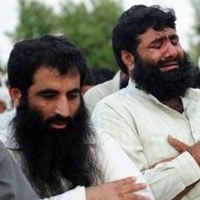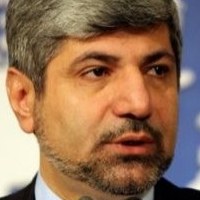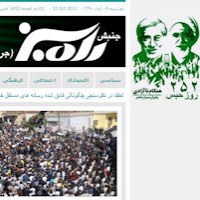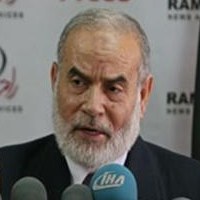![]()
Fri, June 03, 2011 | DebkaFile
Iran: Enough Enriched Uranium for Four Nuclear Bombs
A DebkaFile report:
The Wisconsin Project on Nuclear Arms Control, American’s scientific watchdog on world nuclear weapons production, estimates that by Dec. 2008, Iran had accumulated enough U-235 to fuel one nuclear bomb; by 2009, enough for a second, by August 2010 material for a third bomb and by April 2011, enough enriched uranium for a fourth bomb.
These estimates presuppose an Iranian decision to further process low-enriched material to weapons grade — a process taking no more than a couple of months.
Iran, says the Wisconsin Project, is consolidating its status as a “virtual” nuclear weapon state — meaning it can set about building a bomb whenever its rulers so decide.
In its twice-annual report published Thursday, June 2, Wisconsin revealed three further developments in Iran’s nuclear drive:
1. Since November 2010, when Iran stopped enriching uranium in all cascades at the Natanz plant for about a week (the report does not give the reason for the stoppage – possibly a Stuxnet virus invasion of its computer control system), the enrichment rate has increased. The 5,000 centrifuges spinning in February 2011 increased to nearly 6,000 in May 2011.
Debkafile’s Iranian sources add: Prof. Ferei-doon Abbasi Davani has taken over as director of the enrichment complex at Natanz. He was formerly in charge of combating the Stuxflex worm. Last November, Prof. Abbasi Dayani escaped with light injuries from an attack by a pair of motorcyclists who attached a sticky bomb to his car. It occurred near the Imam Hossein University in Tehran where most of Iran’s secret nuclear labs are located.
2. Wisconsin quotes the International Atomic Energy Agency’s May 2011 report that one of its seals was broken in the “feed and withdrawal area” of the Natanz enrichment plant.
This means that Iran took action to conceal the real amount of is enriched uranium stockpile from the nuclear watchdog and the fact, as Wisconsin reports, that it has accumulated enough material for building four nuclear bombs. Its steady progress will go undetected until the next IAEA inventory in October or November.
Debkafile’s intelligence sources point out that Tehran has won a period of six to seven months for keeping its nuclear activities hidden from oversight with no one in the West or in Israel able to find out what is going on at the Natanz enrichment plant.
3. Wisconsin goes on to state: “Uncertainties about the number of centrifuges operated by Iran make it difficult to draw a conclusion about the performance of individual machines.” More machines may be switched on when IAEA inspectors are not present while less, more advanced centrifuges, may take over after the inspection is over.
Our sources stress that these revelations are highly pertinent to the controversy taking place in Israel over the surprising comments by ex-Mossad Director Meir Dagan.
Dubbed “Mister Stop the Bomb” for reputedly directing covert operations that held off Iran’s nuclear threat for five or six years — though this may an exaggeration — Dagan suddenly began speaking out strongly against any Israeli attack on Iran’s nuclear program. Wednesday, June 1, he implicitly warned that such an attack would precipitate a regional war in which Israel would fare badly.
Israel’s political and defense establishments have always had their doves but Dagan is sounding one like for the first time.
The controversy around his comments reflects a similar argument afoot in US political and defense circles over whether the time has come to smash Iran’s nuclear capability or stand by and let the Islamic Republic becomes a “virtual nuclear weapon state.”
In the last three years, the two schools of thought for and against military action against Iran have been joined by a third, which affirms that the US and Israel can live with an Iran armed with one or two nuclear bombs because this number would be dwarfed even by Israel’s reputed stock let alone the American arsenal. Therefore, until Iran stockpiles a serous arsenal of weapons, it does not constitute an existential threat to Israel.
The Wisconsin Project’s latest report explodes this argument because it exposes the steady accumulation of materials for four bombs in two-and-a-half years and Iran’s dogged advance toward a serious arsenal unless it is stopped.
That is the reason why the military option is back on the table in Jerusalem.



 RSS
RSS











Iran: Enough Uranium for Four Nuclear Bombs – https://www.crethiplethi.com/iran-enough-enriched-uranium-for-four-nuclear-bombs/israel/2011/